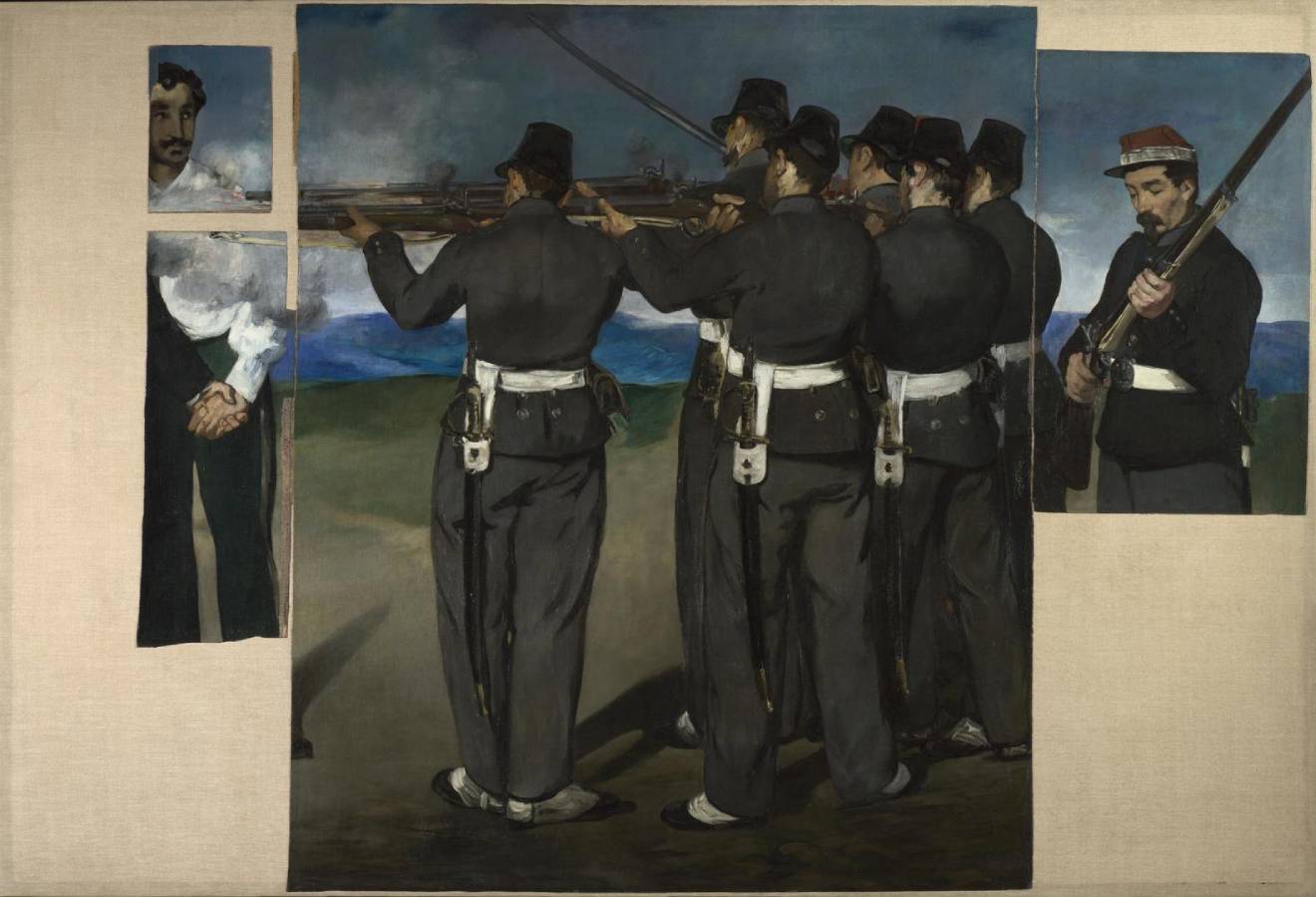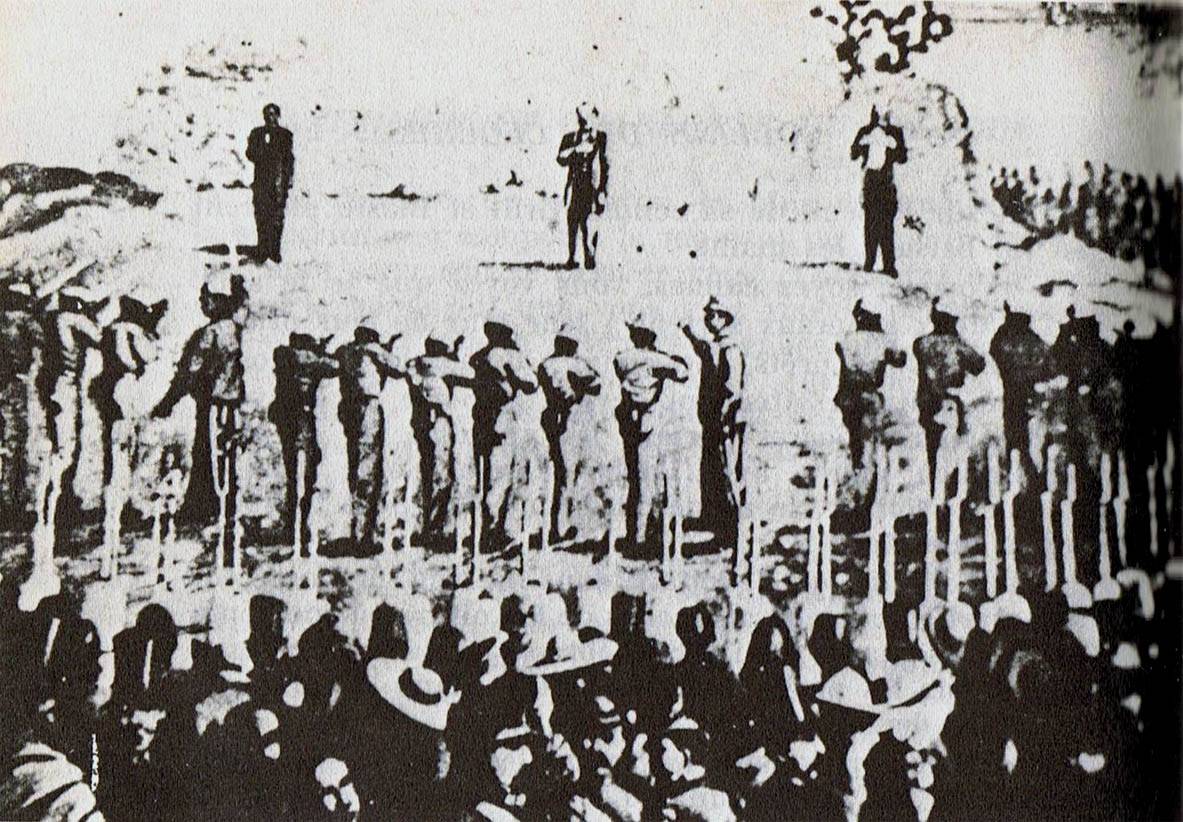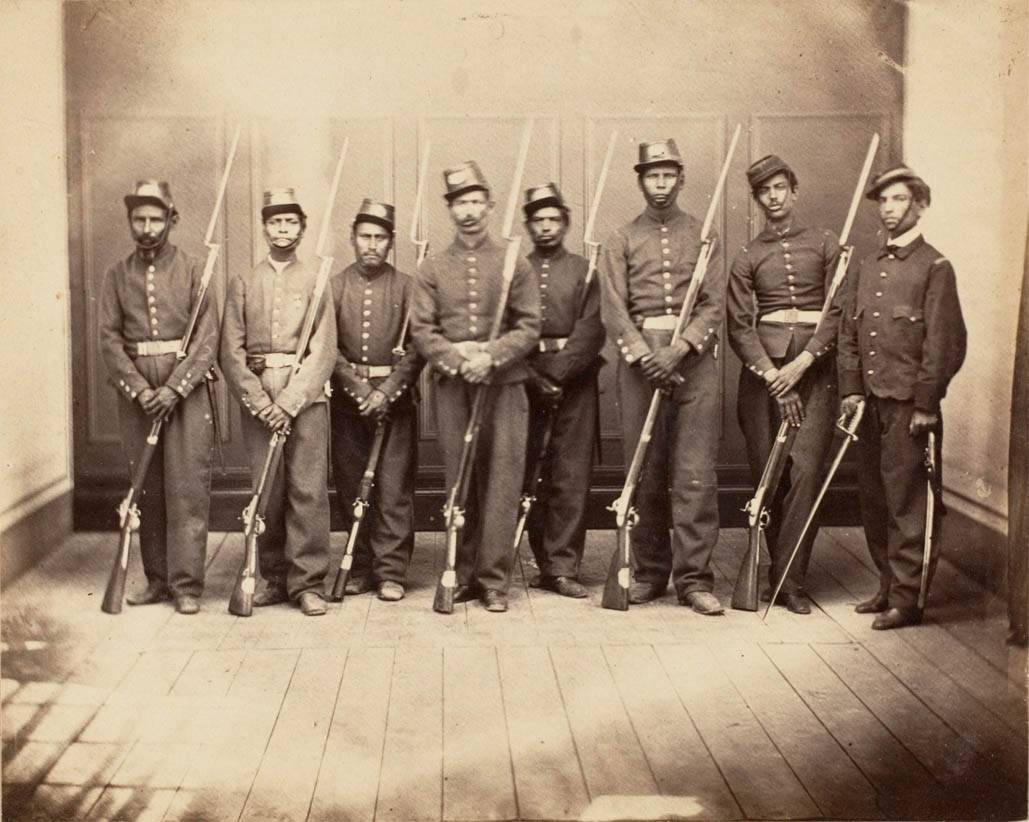Manet, Édouard (1832-1883)
L’exécution de Maximilien (The Execution of Maximilian)
c.1867–1868
Oil on canvas, 193 x 284 cm
National Gallery, London
Photograph of the execution of Maximilian (right) Miramón (center) and Mejía (left).
Photograph of the Mexican firing squad that executed Emperor Maximilian I, commanded by Colonel Palacios (right).
On 19 June 1867 the Emperor of Mexico, the Austrian Archduke Ferdinand Maximilian, and two of his generals were executed by firing squad. The younger brother of the Emperor Franz Josef of Austria, the 32-year-old Maximilian had been installed as Emperor of Mexico by a French expeditionary force in April 1864. With Maximilian enthroned as a puppet ruler, Emperor Napoleon III of France had planned to subdue Mexico and make it a French colony. However, in February 1867, following the victory of Union forces in the American Civil War and facing German threats to France, Napoleon III reneged on his support for Maximilian. French troops were withdrawn from Mexico and the brief Second Mexican Empire collapsed, leaving Maximilian defenceless.
Maximilian was captured in May 1867 by nationalist and Republican forces led by the deposed former president Benito Juárez. Court-martialled and sentenced to death, Maximilian and his two faithful generals, Miguel Miramón and Tomás Mejía, were executed at Querétaro in central Mexico. Manet was outraged by the fate of Maximilian, who was widely viewed as a victim of Napoleon III’s political ambition and incompetence. Although he greatly disliked history painting, the most highly valued genre at the Salon, Manet decided that Maximilian’s execution, which was widely reported in France, merited artistic treatment on an epic scale.
This damaged painting is the second of four versions of The Execution of Maximilian that Manet painted between 1867 and 1868. Three are large-scale pictures and one is a sketch. He also produced a lithograph, which was suppressed by the government censor in January 1869 and never published in Manet’s lifetime. An edition of 50 prints was produced in 1884 after his death. The earliest painted version, in Boston’s Museum of Fine Arts, is a largely imaginative and hastily painted study rather than a finished picture. Although the execution takes place in an open landscape and not against a wall (as in the final version), Manet’s deliberate reference to Goya’s The Third of May 1808 (Prado, Madrid), which he had seen in Spain two years earlier, is most apparent here.
As more detailed accounts of the execution, including photographs of the victims and the firing squad, became available in France, Manet began work on a second, more authentic version – the National Gallery’s picture. He most likely abandoned this version because of discrepancies in scale: the size of General Miramón on the left, part of whose foot can also be seen in the central fragment, suggests that the Emperor and his generals are too close to the firing squad. Rather than repaint the picture, Manet began a new version. Although the National Gallery picture was never completed, its arrangement of figures was retained in the next two versions. A small, freely painted sketch (Ny Carlsberg Glyptotek, Copenhagen) – the third version – is a preparatory study for the final version (Mannheim, Kunsthalle), which was Manet’s fourth and definitive painting of the execution.
A photograph taken in 1883 of the National Gallery picture shows that the left-hand section of the canvas, containing the Emperor and General Mejia, had been cut away; it also shows damage elsewhere in the picture. After Manet’s death, his family cut up the canvas and sold individual fragments separately. The surviving fragments were acquired by Degas, and bought by the National Gallery in 1918 at the sale of his studio. First shown as separate pictures, the fragments were finally combined on one canvas in the late 1970s. (NG)
Compare:
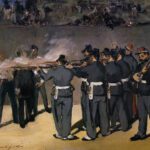 Manet, Édouard (1832-1883)
Manet, Édouard (1832-1883)
Exécution de l’Empereur Maximilien du Mexique
1867
Ny Carlsberg Glyptotek, Copenhagen
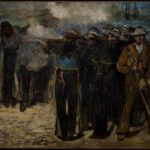 Manet, Édouard (1832-1883)
Manet, Édouard (1832-1883)
L’exécution de l’empereur Maximilien
1867
Museum of Fine Arts, Boston
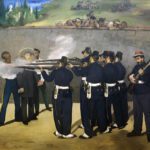 Manet, Édouard (1832-1883)
Manet, Édouard (1832-1883)
L’exécution de l’empereur Maximilien
1868–1869
Kunsthalle Mannheim, Mannheim
See also:
• Degas, Edgar (1834-1917) | Maximilian I of Mexico (1832-1867)
